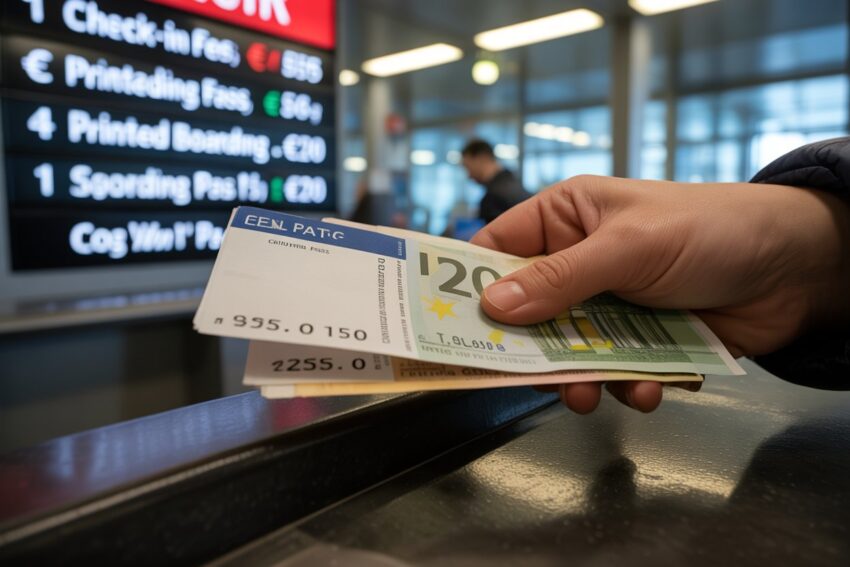Tourism Industry of Ireland Sees Decline in Revenue, Particularly in Dublin and the Midlands, Here’s What You Need to Know
Every year Ireland’s national tourism body, Fáilte Ireland, conducts a survey to get a sense of the problems tourism businesses in Ireland are facing. Most businesses attempted to recuperate economic pressures mainly during summer of 2025. Most of those businesses reported stagnated or declining revenues compared to 2024. This highlights the difficulties in recovering fully during a continuous economic climate.
After gathering information, or lack thereof, from respondents of the survey, Fáilte Ireland reported 43% fell revenues. Another 20% had flat revenues. Only able 37% reported growing business. Lingering sentiments of uncertainty from business owners after subdued economic conditions should have lead to far worse performance in the survey, leading Fáilte Ireland to be pleasantly surprised.
Sectoral Differences: Hotels, Restaurants, and B&Bs Struggle
The performance of different sectors within Ireland’s tourism industry varied widely, according to the survey results. While some businesses saw growth, others faced serious challenges. Notably, 54% of hotels and 46% of tourism attractions reported an increase in turnover during the summer. For hotels, however, the increase was tempered by a reduction in the number of longer stays, although the dip was somewhat offset by a rise in short breaks, which proved to be a more popular option for travelers this summer.
Conversely, the survey revealed that restaurants and bed and breakfasts (B&Bs) had a much harder time, with 64% of restaurants and 52% of B&Bs stating that this summer had been particularly difficult for their businesses. The challenging conditions were attributed to a range of factors, including rising operational costs, particularly energy and payroll expenses, which continue to strain the profitability of these businesses.
Regional Disparities: Wild Atlantic Way vs. Ireland’s Hidden Heartlands
The survey also highlighted significant regional disparities in tourism performance across Ireland. Some areas, such as the Wild Atlantic Way and Ireland’s Ancient East, were able to maintain their revenue levels from the summer of 2024, indicating that these regions managed to attract a steady stream of tourists. The appeal of these areas, known for their breathtaking landscapes, cultural heritage, and outdoor activities, remains strong, contributing to their resilience despite the overall industry downturn.
On the other hand, businesses located in Ireland’s Hidden Heartlands, particularly in the midlands region, as well as those in Dublin, reported more concerning figures. Fifty percent of operators in Ireland’s Hidden Heartlands and 48% of those in Dublin claimed that their revenue had decreased compared to the summer of 2024. This indicates that urban and midland-based businesses are facing more difficulty in attracting tourists, possibly due to factors such as high accommodation costs, less appeal for certain traveler demographics, or competition from more well-known tourist regions.
Decline in North American and European Visitors
One of the most significant findings in the survey was the reported decline in the number of visitors from key international markets, particularly North America and Europe. Forty-four percent of businesses reported a decrease in revenue from North American tourists this summer, with similar declines observed from European markets. The decrease in revenue from these international visitors was a key concern, as the tourism industry in Ireland has long relied on travelers from the United States and key European countries like Germany and the UK.
Specifically, 44% of businesses noted a decline in visitors from Germany, while 48% of respondents reported a drop in visitors from Britain. These declines suggest that external factors, such as economic uncertainty, changes in travel behavior, or even geopolitical issues, could be affecting Ireland’s ability to attract international tourists. The drop in European visitors, in particular, may also reflect a shift in preferences, with some European tourists opting for destinations closer to home due to cost concerns or changing travel patterns.
Rising Operational Costs Remain a Major Concern
Rising operational costs continue to be a major concern for tourism operators across Ireland. Over 1,000 survey respondents cited energy costs as a primary challenge, reflecting the broader economic pressures that businesses are facing in the wake of global energy price fluctuations. Additionally, payroll costs were highlighted as a significant factor affecting business performance, with 81% of hotels and food and drink operators listing them as a key concern.
Non-accommodation operators, such as tour operators and attractions, also noted that the high cost of accommodation is a growing issue, especially when it comes to attracting international visitors. Many businesses expressed frustration over the perception that a holiday in Ireland offers poor value for money, a sentiment that is becoming more common among tourists as costs continue to rise across the sector.
Positive Reviews Amidst Challenges: A Glimmer of Hope
Despite the challenges reported, the survey did show some positive aspects of the tourism sector’s performance. Fifty-five percent of tourism businesses reported receiving positive reviews and recommendations from visitors, indicating that there is still strong satisfaction with the quality of experiences provided in Ireland. This positive feedback is essential for long-term growth, as repeat customers and word-of-mouth recommendations remain crucial for the industry’s recovery and resilience.
Uncertain Outlook for the Rest of 2025
Looking ahead to the final quarter of 2025, the outlook for the tourism industry remains subdued. According to the survey, 44% of businesses expect their revenue to decline in the last quarter compared to the same period in 2024. Only 21% of businesses expect an increase in income, with most operators bracing for a challenging close to the year. This reflects broader concerns within the industry about economic uncertainty, rising costs, and changing travel trends that are impacting tourism worldwide.
The Impact of International Tariffs and Uncertainty
The ongoing uncertainty surrounding international trade tariffs, particularly with the United States, has also had an effect on the tourism sector. About 25% of businesses claimed that the uncertainty caused by tariffs had a negative impact on their investment plans, with many operators delaying or scaling back projects. This uncertainty is particularly evident among businesses that rely heavily on American visitors, as changes in trade policy and the broader global economy could further impact international tourism to Ireland.
A Challenging Year for Irish Tourism
According to the most recent data from Fáilte Ireland, the “Tourism Barometer” survey yields a mixed picture for the sector. Although some areas and industries exceeded expectations, most operators are struggling with sustained poor profitability, coupled with rising and hard to predict international trade. The anticipated conditions for the coming months are expected to remain unsustainable. This is a reason to expect poor profitability for hospitality and tourism. Some positivity from visitors and the considerable effort resilience and business adaptation under the current conditions provide some reason for expected unsustainable profitability levels to remain for the sector in the recovery phase.
The post
Tourism Industry of Ireland Sees Decline in Revenue, Particularly in Dublin and the Midlands, Here’s What You Need to Know appeared first on
Travel And Tour World.









